Koreans
    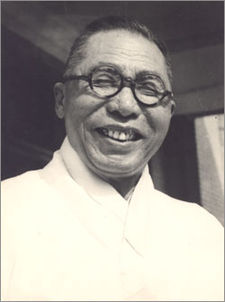 .png)   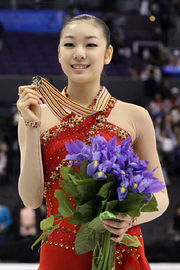
1st row: Eulji Mundeok • Yun Duseo • King Sejong
2nd row: Kim Jeonghui • Kim Gu • Kim Dae-jung |
|||||||||||||||||||||||||||||||||||||||||||||||||||||||||||||||||||||||||||||||||||||||||||||
| Total population | |||||||||||||||||||||||||||||||||||||||||||||||||||||||||||||||||||||||||||||||||||||||||||||
|---|---|---|---|---|---|---|---|---|---|---|---|---|---|---|---|---|---|---|---|---|---|---|---|---|---|---|---|---|---|---|---|---|---|---|---|---|---|---|---|---|---|---|---|---|---|---|---|---|---|---|---|---|---|---|---|---|---|---|---|---|---|---|---|---|---|---|---|---|---|---|---|---|---|---|---|---|---|---|---|---|---|---|---|---|---|---|---|---|---|---|---|---|---|
| 81,000,000 (est.)[1] | |||||||||||||||||||||||||||||||||||||||||||||||||||||||||||||||||||||||||||||||||||||||||||||
| Regions with significant populations | |||||||||||||||||||||||||||||||||||||||||||||||||||||||||||||||||||||||||||||||||||||||||||||
Overseas populations as of 2009[update] |
|||||||||||||||||||||||||||||||||||||||||||||||||||||||||||||||||||||||||||||||||||||||||||||
|
|||||||||||||||||||||||||||||||||||||||||||||||||||||||||||||||||||||||||||||||||||||||||||||
| Languages | |||||||||||||||||||||||||||||||||||||||||||||||||||||||||||||||||||||||||||||||||||||||||||||
| Religion | |||||||||||||||||||||||||||||||||||||||||||||||||||||||||||||||||||||||||||||||||||||||||||||
|
Mahayana Buddhism, Christianity, Cheondoism. Background of Confucianism and Korean shamanism.[7][8][9][10][11][12][13] |
The Korean people are an ethnic group primarily located in Korea.[14] Most Koreans speak the Korean language.
Contents |
Names
South Koreans call Koreans Han-guk-in (한국인; 韓國人)—or simply 한인/Han-in for South Koreans living abroad—or informally Hanguk saram (한국 사람; 韓國 사람), while North Koreans call Koreans Chosŏn-in (조선인; 朝鮮人) or Chosŏn saram (조선 사람; 朝鮮 사람). See Names of Korea, Korean romanization, Hangul (한글) and Hanja (한자).
Origins
Koreans are believed to be descendants of Altaic-[15][16] or proto-Altaic[17]-speaking tribes, linking them with Mongolians, Turks, and Tungusic peoples. Archaeological evidence suggests proto-Koreans were Altaic-language-speaking migrants from south-central Siberia,[18] who populated ancient Korea in successive waves from the Neolithic age to the Bronze Age[19].
Genetic studies
Studies of polymorphisms in the human Y-chromosome have so far produced evidence to suggest that the Korean people have a very long history as a distinct, mostly endogamous ethnic group with successive waves of people moving to the peninsula and three major Y-chromosome haplogroups.[20]
Korean males display a high frequency of a derived subclade of possibly Manchurian origin, Haplogroup O2b* (P49). In fact, Haplogroup O2b* is the second-most common Y-chromosome haplogroup in Korea, occurring in approximately 14%[21][22][23] to 33%[24] of all Korean males.
There is moderate to high frequency of Haplogroup O3 and Haplogroup C3. Origin of Haplogroup O3 is thought to be diverse, some of them having expanded from Manchuria with Haplogroup O2b and some of them having expanded from southern China by people with rice agriculture such as the Hmong people. Haplogroup C3 is thought to be the original inhabitants of the area related to the Nivkhs.
A population genetic study demonstrated DNA evidence of the origin of Koreans from the central Asian Mongolians. Furthermore, the Koreans are more closely related to the Japanese and quite distant from the Chinese.[25]
Regional differences
Distinct regional differences, culturally and politically, exist among the Koreans, as they do among other ethnicities.
Within South Korea, the most important regional difference is between the Yeongnam region, embracing Gyeongsangbuk-do and Gyeongsangnam-do provinces in the southeast, and the Honam region, embracing Jeollabuk-do and Jeollanam-do provinces in the southwest. The two regions, separated by the Sobaek Mts., nurture a rivalry said to reach back to the Three Kingdoms Period, which lasted from the fourth century to the seventh century A.D., when the kingdoms of Goguryeo, Baekje and Silla struggled for control of the peninsula.
Observers noted that interregional marriages are rare, and that as of 1990, a new four-lane highway completed in 1984 between Gwangju and Daegu, the capitals of Jeollanam-do and Gyeongsangbuk-do, was unsuccessful in promoting travel between the two areas.
South Korea's political elite, including presidents Park Chung-hee, Chun Doo-hwan, and Roh Tae-woo, have come largely from the Yeongnam region. As a result, Yeongnam has been a special beneficiary of government development assistance.By contrast, historically the Honam region has remained comparatively rural and undeveloped. Regional social disturbances intensified in the May 1980 Gwangju Democratization Movement or 5.18 Democratization Movement, in which about 200 and perhaps many more College students and citizens of the Gwangju were killed by Chun Doo-hwan's troops who were sent to quell demonstrations of students and citizens against the government and the military regime. And even Chun Doo-hwan made the Gwangju Democratization Movement distorted as if it had been the infiltration of communism by controlling the media. The demonstrations against the military regime occurred all over the country, but only Gwangju was heavily damaged. Because GNP(Grand National Party) stems from the military regime, the people of Honam don't vote for GNP in most elections.
Regional stereotypes, like regional dialects, have been breaking down under the influence of centralized education, nationwide media, and the several decades of population movement since the Korean War. Stereotypes remain important, however, in the eyes of many South Koreans. For example, the people of Gyeonggi-do, surrounding Seoul, are often described as being cultured, and Chungcheong people, inhabiting the region embracing Chungcheongbuk-do and Chungcheongnam-do provinces, are thought to be mild-mannered, manifesting true yangban virtues. The people of Gangwon-do in the northeast were viewed as farmers in a rural, countryside area, while Koreans from the northern provinces of Pyongan, Hwanghae, and Hamgyong, now in North Korea, are perceived as being diligent and aggressive. Jeju-do is known for its strong-minded and independent women.
Culture
North Korea and South Korea share a common heritage, but the political division since 1945 has resulted in some divergence of modern culture.
Language
The language of the Korean people is the Korean language, which uses hangul as its main writing system. There are around 78 million speakers of the Korean language worldwide.[6]
North Korea data

Estimating the size, growth rate, sex ratio, and age structure of North Korea's population has been extremely difficult. Until release of official data in 1989, the 1963 edition of the North Korea Central Yearbook was the last official publication to disclose population figures. After 1963 demographers used varying methods to estimate the population. They either totaled the number of delegates elected to the Supreme People's Assembly (each delegate representing 50,000 people before 1962 and 30,000 people afterward) or relied on official statements that a certain number of persons, or percentage of the population, was engaged in a particular activity. Thus, on the basis of remarks made by President Kim Il Sung in 1977 concerning school attendance, the population that year was calculated at 17.2 million persons. During the 1980s, health statistics, including life expectancy and causes of mortality, were gradually made available to the outside world.
In 1989 the Central Statistics Bureau released demographic data to the United Nations Fund for Population Activities (UNFPA) in order to secure the UNFPA's assistance in holding North Korea's first nationwide census since the establishment of the state in 1948. Although the figures given to the United Nations might have been distorted, it appears that in line with other attempts to open itself to the outside world, the North Korean regime has also opened somewhat in the demographic realm. Although the country lacks trained demographers, accurate data on household registration, migration, and births and deaths are available to North Korean authorities. According to the United States scholar Nicholas Eberstadt and demographer Judith Banister, vital statistics and personal information on residents are kept by agencies on the ri (“village”, the local administrative unit) level in rural areas and the dong (“district” or “block”) level in urban areas.
Koreans outside of the Korean peninsula
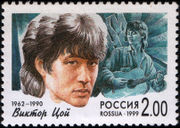
Large-scale emigration from Korea began as early as the mid-1860s, mainly into the Russian Far East and Northeast China; these populations would later grow to nearly three million Koreans in China and several hundred thousand Koryo-saram (ethnic Koreans in Central Asia).[26][27] During the Japanese colonial period of 1910-1945, Koreans were often recruited and or forced into labour service to work in mainland Japan, Karafuto Prefecture, and Manchukuo; the ones who chose to remain in Japan at the end of the war became known as Zainichi Koreans, while the roughly 40 thousand who were trapped in Karafuto after the Soviet invasion are typically referred to as Sakhalin Koreans.[28][29] Korean emigration to America was known to have begun as early as 1903, but the Korean American community did not grow to a significant size until after the passage of the Immigration Reform Act of 1965; as of 2007, roughly 2 million Koreans emigrants and people of Korean descent live in the United States.
Large Koreatowns can also be found in Australia, Brazil, and Canada. The largest Korean community outside of Korea is in Los Angeles, California. Koreans in the United Kingdom now form Western Europe's largest Korean community; Koreans in Germany used to outnumber those in the UK until the late 1990s. There are also Koreatowns in China and Latin American countries such as Argentina, Guatemala, and Mexico. During the 1990s and 2000s, the number of Koreans in the Philippines and Koreans in Vietnam have also grown significantly.[30][31]
The Korean population in the United States is a small share of the US economy, but it has a disproportionately favorable impact. The Koreans in the United States have a saving rate double that of the average American. Koreans in the United States graduate from college at a rate double that of the average American providing a highly skilled and educated addition to the US workforce. According to the U.S. Census Bureau's Census 2000 data, mean household earnings for Koreans in the U.S. were $59,981, approximately 5.1% higher than the U.S. average of $56,604.[32] Marcus Noland, an expert from the Peterson Institute for International Economics, has claimed that if somehow the Korean-American population were to double, the US would experience a growth rate of per capita income by 0.1 to 0.2 percent.
Gallery
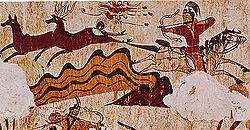 Complex of Goguryeo tombs |
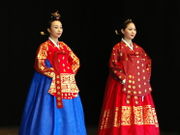 Hanbok dress |
 Korean dressed as a Joseon Queen |
See also
- Korean diaspora
- Koreans in CIS (Koreans of the former Soviet Union)
- Koreatown
- Demographics of North Korea
- Demographics of South Korea
- List of Korea-related topics
Notes
- ↑ Korean Peninsula (50.5 million + 24.6 million) + Korean diaspora (6.82 million)
- ↑ Population of South Korea 2010
- ↑ Preliminary results of the 2008 Census of Population of the Democratic People’s Republic of Korea conducted on 1-15 October 2008
- ↑ 4.00 4.01 4.02 4.03 4.04 4.05 4.06 4.07 4.08 4.09 4.10 4.11 4.12 4.13 4.14 4.15 4.16 4.17 4.18 4.19 4.20 4.21 4.22 4.23 4.24 4.25 4.26 4.27 재외동포현황/Current Status of Overseas Compatriots. South Korea: Ministry of Foreign Affairs and Trade. 2009. http://www.mofat.go.kr/consul/overseascitizen/compatriotcondition/index6.jsp?TabMenu=TabMenu6. Retrieved 2009-05-21.
- ↑ Note that the 2006 American Community Survey gave a much smaller figure of 1,520,703. See S0201. Selected Population Profile in the United States. United States Census Bureau. http://factfinder.census.gov/servlet/IPTable?_bm=y&-geo_id=01000US&-qr_name=ACS_2006_EST_G00_S0201&-qr_name=ACS_2006_EST_G00_S0201PR&-qr_name=ACS_2006_EST_G00_S0201T&-qr_name=ACS_2006_EST_G00_S0201TPR&-ds_name=ACS_2006_EST_G00_&-reg=ACS_2006_EST_G00_S0201:042;ACS_2006_EST_G00_S0201PR:042;ACS_2006_EST_G00_S0201T:042;ACS_2006_EST_G00_S0201TPR:042&-_lang=en&-redoLog=false&-format=. Retrieved 2007-09-22.
- ↑ 6.0 6.1 "Korean". ethnologue. http://www.ethnologue.com/14/show_iso639.asp?code=kor. Retrieved 2007-04-20.
- ↑ Every Culture - Culture of NORTH KOREA
- ↑ Every Culture - South Koreans
- ↑ Every Culture - Culture of SOUTH KOREA
- ↑ state.gov
- ↑ "Korea.net: The official website of the Republic of Korea - Religion". http://www.korea.net/korea/kor_loca.asp?code=U05.
- ↑ "International Religious Freedom Report 2008 - Korea, Republic of". U.S. Department of State. Bureau of Democracy, Human Rights, and Labor. 22 January 2009. http://2001-2009.state.gov/g/drl/rls/irf/2008/108411.htm. Retrieved 31 January 2009.
- ↑ state.gov
- ↑ Asian Americans: Contemporary Trends and Issues - Page 40 by Pyong Gap Min
- ↑ Nelson, Sarah M. (1993). The Archaeology of Korea. Cambridge University Press. pp. 6. ISBN 0521407834.
- ↑ "Korean people(한민족)" (in Korean). Naver Encyclopedia. http://100.naver.com/100.nhn?docid=186719. Retrieved 2007-03-09.
- ↑ "Korean people(한민족)" (in Korean). Encyclopedia Britannica Korea. http://preview.britannica.co.kr/bol/topic.asp?article_id=b24h2877b. Retrieved 2007-03-09.
- ↑ The Rise of Civilization in East Asia: the Archaeology of China, Korea and Japan, pp. 165
- ↑ 뿌리 깊은 한국사, 샘이 깊은 이야기: 고조선, 삼국, pp. 44–45
- ↑ Y chromosomes and mtDNA of Koreans
- ↑ Han-Jun Jin, Kyoung-Don Kwak, Michael F. Hammer, Yutaka Nakahori, Toshikatsu Shinka, Ju-Won Lee, Feng Jin, Xuming Jia, Chris Tyler-Smith and Wook Kim, "Y-chromosomal DNA haplogroups and their implications for the dual origins of the Koreans," Human Genetics (2003)
- ↑ Yali Xue, Tatiana Zerjal, Weidong Bao et al., "Male Demography in East Asia: A North–South Contrast in Human Population Expansion Times," Genetics 172: 2431–2439 (April 2006). DOI: 10.1534/genetics.105.054270
- ↑ Han-Jun Jin, Chris Tyler-Smith, and Wook Kim (2009), "The Peopling of Korea Revealed by Analyses of Mitochondrial DNA and Y-Chromosomal Markers," PLoS ONE 4(1): e4210. doi:10.1371/journal.pone.0004210
- ↑ Michael F. Hammer, Tatiana M. Karafet, Hwayong Park et al., "Dual origins of the Japanese: common ground for hunter-gatherer and farmer Y chromosomes," Journal of Human Genetics (2006) 51:47–58
- ↑ Origin of the Koreans: a population genetic study
- ↑ Lee Kwang-kyu (2000). Overseas Koreans. Seoul: Jimoondang. ISBN 89-88095-18-9.
- ↑ Kim, Si-joong (2003). "The Economic Status and Role of Ethnic Koreans in China" (PDF). The Korean Diaspora in the World Economy. Institute for International Economics. pp. Ch. 6: 101–131. http://www.iie.com/publications/chapters_preview/365/6iie3586.pdf.
- ↑ Ban, Byung-yool (2004-09-22). "Koreans in Russia: Historical Perspective". Korea Times. http://times.hankooki.com/lpage/nation/200409/kt2004092218583111950.htm. Retrieved 2006-11-20.
- ↑ NOZAKI, Yoshiki; INOKUCHI Hiromitsu, KIM Tae-Young. "Legal Categories, Demographic Change and Japan’s Korean Residents in the Long Twentieth Century". Japan Focus. http://www.japanfocus.org/products/details/2220.
- ↑ Kelly, Tim (2006-09-18). "Ho Chi Minh Money Trail". Forbes. http://members.forbes.com/global/2006/0918/028.html. Retrieved 2007-03-27.
- ↑ Meinardus, Ronaldo (2005-12-15). ""Korean Wave" in Philippines". The Korea Times. http://times.hankooki.com/lpage/opinion/200512/kt2005121517211054280.htm. Retrieved 2007-02-16.
- ↑ http://factfinder.census.gov/servlet/QTTable?_bm=y&-geo_id=01000US&-qr_name=DEC_2000_SF4_U_QTP33&-reg=DEC_2000_SF4_U_QTP33:001|023&-ds_name=DEC_2000_SF4_U&-_lang=en&-format=&-CONTEXT=qt
References
 This article incorporates public domain material from websites or documents of the Library of Congress Country Studies.
This article incorporates public domain material from websites or documents of the Library of Congress Country Studies.- 서의식 and 강봉룡. 뿌리 깊은 한국사, 샘이 깊은 이야기: 고조선, 삼국, ISBN 89-8133-536-2
- Barnes, Gina. The Rise of Civilization in East Asia: the Archaeology of China, Korea and Japan, ISBN 05-0027-974-8
External links
|
|||||||||||||||||||||||||||||
